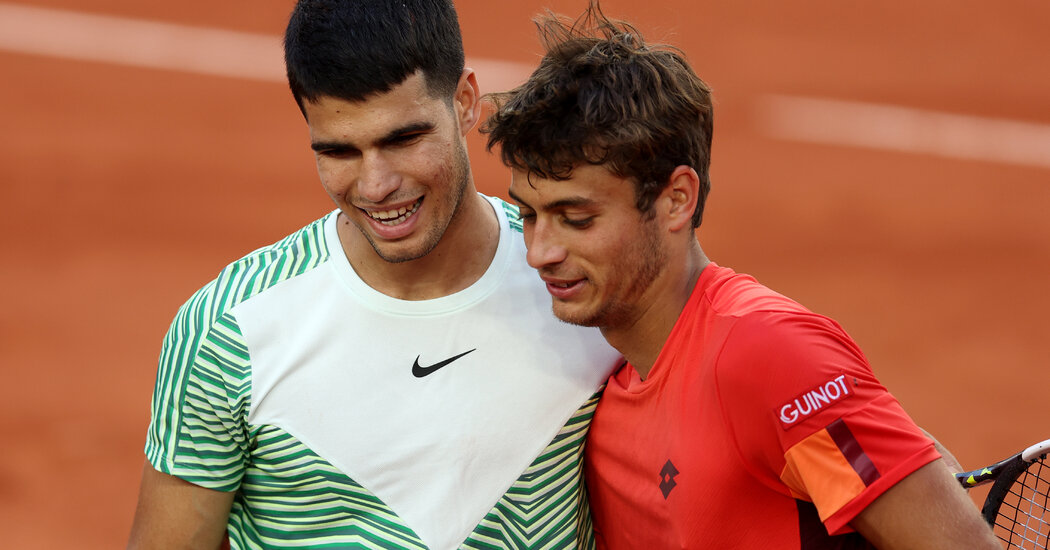Chess’s Governing Body Delays Report on Cheating Scandal
In September, when the five-time world chess champion Magnus Carlsen accused a 19-year-old American player named Hans Niemann of cheating at a tournament in St. Louis, an uproar ensued. Carlsen implied that his opponent was surreptitiously playing moves relayed from an outside source, something Niemann strenuously denied.
As the controversy at the prestigious Sinquefield Cup became international news, the International Chess Federation, known as FIDE, which is the governing body for the game, promised a full investigation. The report, which was completed in February, was originally supposed to be published in April, according to a post on the organization’s blog.
Now, the wait for answers just got a lot longer.
On Wednesday, a federation official, Dana Reizniece-Ozola, said the report was delayed because the organization “has decided to hold the matter in abeyance until at least October of this year pending possible further developments in the civil suit between the parties.”
The suit at issue is a $100 million defamation claim brought last year by Niemann against Carlsen and Chess.com, the world’s largest chess website, which had accused Niemann of cheating in online games. A top-ranked player, Hikaru Nakamura, was also named in the suit and accused of amplifying Carlsen’s statements in online videos.
It is unclear why FIDE believes it should steer clear of a lawsuit to which it is not a party, but Terrence Oved, an attorney for Niemann, believes it comes down to money. He noted that last year, Chess.com acquired Carlsen’s company, Play Magnus, and that FIDE has financial deals with two subsidiaries of Play Magnus, Chessable and Chess24. In 2021, for instance, Chess24 bought broadcast rights to FIDE events until 2026.
“Given the deep-rooted financial ties between FIDE, Chess.com, Play Magnus and Magnus Carlsen,” Oved wrote in an email, “FIDE’s sudden refusal to disclose the results of its independent investigation bolsters our belief that the results of that investigation are highly favorable to Niemann and raises serious concerns that this scandal runs even deeper than anticipated.”
David Llada, FIDE’s director of communications, said that the decision to postpone the release of the report and any potential disciplinary action was made by the organization’s Ethics and Disciplinary Commission, not by its president or any high-level executive.
“The E.D.C. are professionals and act according to the best interests of FIDE and the chess community,” Llada said. “They also act with the highest degree of independence from FIDE to preserve their impartiality.”
In the chess world, there was hope that the report would clear up what exactly happened in St. Louis last year, one of the strangest and noisiest chess controversies in the game’s history.
It began when Niemann beat Carlsen, whom many regard as the greatest player ever, during an early match at the round-robin Sinquefield Cup. It was a surprising triumph, though Carlsen’s swift departure from the tournament quickly overshadowed it. The internet was soon awash with theories about how Niemann might have secreted a radio device on his body. In a postgame interview at the Cup, Niemann offered to play naked, in a radio signal-proofed room, to prove he was playing clean.
Two weeks after the tournament ended, Carlsen made clear what was implied by his hasty exit.
“I believe that Niemann has cheated more — and more recently — than he has publicly admitted,” Carlsen wrote on Twitter. He grew suspicious, he continued, because Niemann didn’t seem particularly tense at critical moments and outplayed him “in a way I think only a handful of players can do.”
This was far from definitive proof, but not long after Carlsen’s tweet, Chess.com published a lengthy report about Neimann’s online play, and stated that he had very likely cheated more than 100 times.
Niemann acknowledged in interviews last year that he had, in fact, cheated in online games when he was younger, something he said he deeply regretted. He also said emphatically that he had never cheated during an over-the-board game, as in-person chess is known.
Many in the chess world did not believe him. In the lawsuit, which was filed in October, Niemann’s lawyers said that their client had been “egregiously” defamed by Carlsen and Chess.com and thrust into “the center of what is now widely reported as the single biggest chess scandal in history.”
Erik Allebest, the chief executive of Chess.com, said, “I’m not in contact with FIDE on this topic, nor do I have any theories, unfortunately.” Henrik Carlsen, Magnus Carlsen’s father and adviser, declined to comment.
The Sinquefield Cup game between Carlsen and Niemann has become one of the most studied in decades, and grandmasters who looked closely found nothing supercomputer-like in the American’s play. Rather, they said, Carlsen made a few highly uncharacteristic mistakes. Viswanathan Anand, a five-time world champion, put it this way: “I thought Carlsen literally cracked at the end.”
Though the full contents of the report remain a secret, one crucial detail is known. FIDE retained a professor of computer science at the University at Buffalo named Kenneth Regan, who has developed what is widely considered the world’s most sophisticated cheating detection algorithm — a way to track how closely a player’s moves mirror those of supercomputers that can outplay anything with a pulse.
Regan was asked by the chess federation to study Niemann’s playing during the Sinquefield Cup and other over-the-board tournaments. Did he find evidence that Niemann had cheated?
“Unequivocally no,” he said in an interview on Wednesday. “And there’s not much more to say about it.”
Time is slowly adding heft of its own to this verdict. Niemann has continued to play in professional tournaments, and he keeps getting better. His rating is higher than it was during the Sinquefield Cup, and has now crossed the 2700 threshold that separates merely great players from the most elite. When the Sinquefield Cup began, he was ranked 49th in the world. Today, he is ranked 31st.


